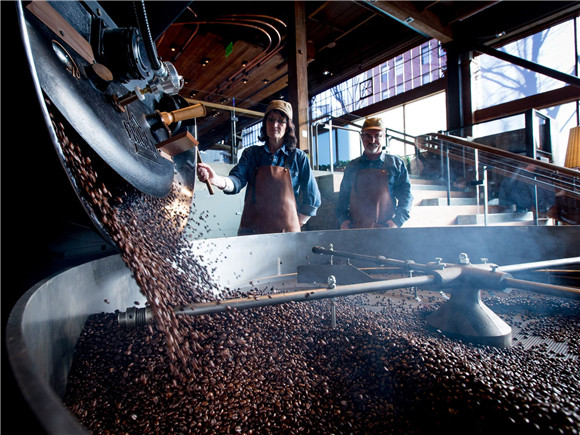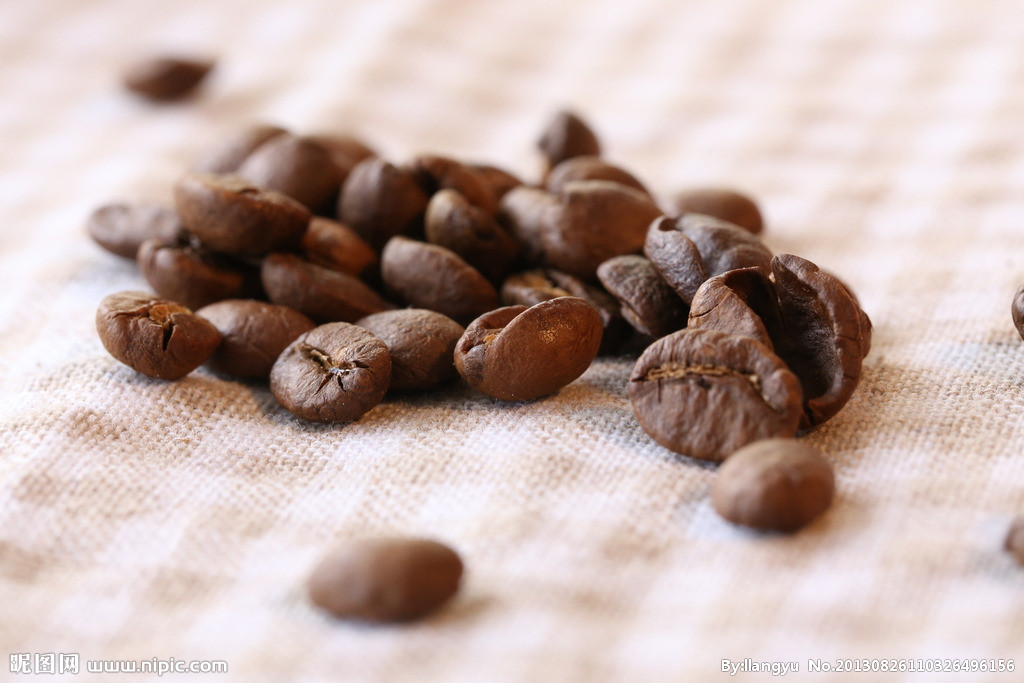Introduction to the main points of World Coffee knowledge: a detailed explanation of the Powder-to-Water ratio of SCAA Gold Cup Theory
The proportion of SCAA refined cup coffee defined by the Gold Cup Fine Coffee Association of the United States and the European Fine Coffee Association of scae, the extraction rate of coffee must be about 20%, while the TDS (concentration ratio) is about 1.1% to 1.3%.
For Drip Filter drip brewing, how to extract the best coffee flavor is controlled by two variables: the extract of coffee powder and the concentration in a cup of coffee. As early as 1960, the so-called "Coffee Gold Cup" golden cup caffeine defined Gold Cup Standard according to SCAE (European Coffee Association): "1000ml water, 50g 60g coffee powder, 92 °C ~ 96 °C hot water to brew coffee." The coffee is brewed at the "bull's-eye" position of the optimum extraction rate (Extraction) and concentration (Strength Concentration), that is, "Gold Cup".

First of all, each coffee can be extracted, the maximum is about 30% (that is, 70% of xylem cannot be extracted), that is, 10g coffee powder has up to 3G coffee soluble extract, while a cup of delicious coffee, the best extraction rate of coffee, that is, 60% 70% of the maximum soluble matter of 30% coffee is the most suitable extraction, which is less than 60% (less than 18%). The coffee flavor will show incomplete flavor. On the other hand, if the extraction rate is more than 70% (the extraction rate is more than 22%), the coffee will be overextracted and the coffee will show bitter, spicy and bad taste.
Therefore, the best extraction rate of coffee is 18%-22%.
This 18% 22% 30% * (60% 70%), that is, the maximum extractable rate of coffee is 30%. Extraction of 6% 7% is the best flavor of coffee. Why not write 18% 22% directly, while around 60% 70% of 30%? when we are brewing a cup of coffee, we can imagine how to extract the best flavor of 60% from the maximum extract of coffee. In other words, 10 g coffee powder can extract up to 30% (3G) of coffee soluble matter, but we expect the best extract 18%-22% (1.8-2.2 g).
In addition, how much hot water these extracts will dissolve in, this is the coffee concentration, the optimum coffee concentration is between 1.0 and 1.5%, less than 1.0% light and tasteless, it is better to drink boiled water, if the coffee concentration is too strong more than 1.5% (for dripping coffee), it's not a good taste. The best Gold Cup concentration of dripping coffee is 1.2%-1.45%. Too light or too strong coffee concentration is not good taste. American flavor: coffee with a relatively light concentration, so the TDS of a cup of American coffee is about 1.2-1.3%. European flavor: generally speaking, the concentration of European coffee is a little stronger, so the TDS of a cup of European coffee is about 1.3 to 1.45%.
Therefore, SCAE (European Fine Coffee Association) defines the target position of the standard Gold Cup, which is related to the extraction rate and concentration, that is, the amount of coffee powder is as follows:

Determine the amount of coffee to be brewed and set the upper and lower limits of coffee powder from the control table, how to reach the best extraction rate from 0: 30% to 18: 22%, and the brewing concentration of coffee is just at 1.2%-1.45%, just like how to throw a good ball. After brewing a cup of Gold Cup coffee, the above basic powder and brewing amount are determined, whether it can reach the best extraction rate of 18%-22%, while the concentration falls at 1.2%-1.45%, which involves the problem of extraction rate, coffee grinding thickness, water temperature, filter medium (affecting water retention time). Wait for mutual cause.
According to SCAE, the controlling factors of making a good cup of coffee include the following five items; no matter how you brew coffee, these five principles must be mastered.
Master extraction time Contact time: apply various brewing methods, in order to extract 180.22% extraction rate within the better extraction time, it is important to control the grinding degree and water temperature of coffee.
It is necessary to master the water temperature from Temperature of the water:92 °C to 96 °C. too high or too low initial water temperature may not be appropriate.
Disturbance of coffee powder Turbulence in the process of brewing: disturbance is to get the proper extraction rate, such as plug air stirring, hand flushing water column flushing strength and so on are all necessary to achieve the extraction.
Pre-soaked moisturizing coffee powder Wettability: hand-made, espresso, American style has the same wetting stage before brewing, this stage wetting water is per gram of coffee powder, 2ml water pre-soaking, soaking time is about 30sec. Of course, the roasting state of coffee beans has different pre-soaking and moistening states, and this part of the hand washing can be well controlled.
Uniform brewing Uniform Dispersion: the brewing process allows the water to pass evenly through each coffee powder, while maintaining the same water temperature from the beginning to the end. Water extraction is important. For example, espresso emphasizes the uniform temperature and pressure of the brewing water, and this is the case with a stable water column by hand.

Coffee brewing method
French press French pressure
Percolator mocha pot
Drip Filter trickling filter (hand flushing is one of the kinds of drip filtrate)
Syphon plug siphon
Pressurised Infusion (Espresso) Italian concentration
As for the grinding thickness of coffee powder:
French pressure: each coffee is ground into 100,300 coffee powders, about 0.7mm powder in diameter, that is, about the size of No. 2 granulated sugar.
Filter: each coffee is ground into 500,800 coffee powder, about diameter 0.5mm powder, that is, about the size of coffee with sugar particles.
Saifeng: each coffee is ground into 1000 to 3000 coffee powders, about 0.35mm powder in diameter, that is, about the size of food refined salt particles.
Espresson: each coffee is ground into 3500 coffee powders, about the diameter of 0.05mm powder, that is, about the size of flour particles.

SCAA standard cup timing coffee powder grinding, 70: 75% through the standard sieve # 20 (0.85mm) uniformity, about a little thicker than the French press.
In addition, SCAE provides the concept of coffee brewing process and brewing time of different grinding thickness:
1. Wetting: at this time, put hot water into the coffee powder to wet the coffee, let the coffee extract dissolve, the amount of water infiltration is about twice the amount of coffee powder, and the infiltration time is about 30sce.
two。 Brewing stage Water Cycle: at this time, because the coffee powder thickness has different time to let the water contact with the coffee powder, and dissolve the coffee extract.
a. French pressing: the powder is coarse, about infiltrating 3~5min
b. Dripping follicle type: the cooking process is about 1~3min
C.Syphon: the cooking process is about 40~60sec
D.espresso: extraction of 30cc espresso in 30 seconds
3. The latter part of the extraction: at this time, the coffee has extracted more than 50% of the extractable matter, that is, 60% to 70% of the coffee soluble extract is extracted for the most suitable extraction and adjust the amount of water to reach the optimum coffee concentration between 1.0% and 1.5%.
4. Coffee grounds after extraction: the water content in the coffee grounds is about 2 times that of the original coffee powder (hand-brewed type).
Weight reference of some coffee pounds
1. Coffee beans: about 60.7 for 1g
2.Hario Syphon measuring spoon: a flat spoon 8x 9g
3.Hario V60 measuring spoon: one flat spoon 14015g
4. Coffee beans (after roasting): 0.38, 0.43 g / cm ^ 3
5. Coffee powder: 0.44, 0.48 g / cm ^ 3
6. A coffee bean with long axis 12mm, short axis 8mm and high 5mm semi-ellipsoid is roasted. It is said that the coffee extraction is related to the surface area. The surface area of the above coffee is 1.4cm ^ 2.
Source: platinum Coffee College
Important Notice :
前街咖啡 FrontStreet Coffee has moved to new addredd:
FrontStreet Coffee Address: 315,Donghua East Road,GuangZhou
Tel:020 38364473
- Prev

Introduction to the main points of the preservation knowledge of coffee beans; how long is the shelf life of ripe coffee beans?
Wine lovers all know that a bottle of wine encapsulated in a bottle is a living creature that is changing all the time. In fact, the same view applies to packaged and stored coffee beans. So how long can the unopened coffee beans be preserved in proper packaging? We use the practical experience of a large number of lovers and coffee shopkeepers to freshen the cooked beans of coffee.
- Next

Introduction to the main points of world coffee bean knowledge: a detailed explanation of the production technology and principle of decaf coffee.
The so-called decaffeinated coffee, as its name implies, is coffee with only a small amount of caffeine. Coffee contains many ingredients and substances, among which caffeine has an obvious effect on the human body. For many people who are addicted to coffee but whose physical condition does not allow caffeine, decaf is the best choice. Generally speaking, Arabica coffee beans contain
Related
- What is the meaning of lactic acid fermentation with coffee bean treatment?
- How to judge the state of foam by sound?
- How does the latte pull out the unicorn pattern? Come to get for a little trick to improve the flower pull!
- Will flower pulling affect the taste of the latte?
- Do you know the history of coffee?
- The difference between honey treatment and sun washing what is raisin honey treatment?
- What kind of milk can a novice use to make coffee foam to keep the foam longer? The correct method and skills of milking tutorial sharing
- Why do washed coffee beans taste sour? Flavor characteristics of washed Coffee
- Introduction to the skill of how to practice the size and height of water injection around the circle of hand-brewed coffee
- How do beginners practice coffee flower drawing from scratch?

